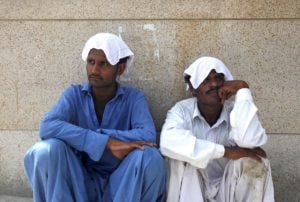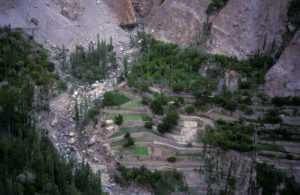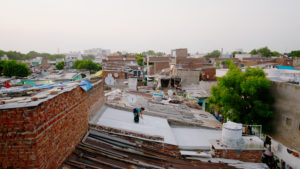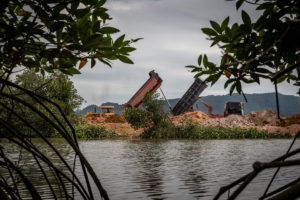Editor’s note: This is the third in a three-part video series that explores how people in some of South Asia’s hottest towns and cities experience crippling heatwaves. Filmed at the height of last year’s heatwave in May, and published on the cusp of this year’s hot season, vloggers from Bangladesh, India and Pakistan use video diaries to share a day in their lives in times of intense heat.
Through these vlogs, we explore the human impacts of soaring temperatures through the experiences of journalists from diverse backgrounds in three different countries. Complementing our reporting and analysis on the science of the climate crisis, the series depicts what it means to live in a region highly vulnerable to the impacts of climate change.
For Sultan Rind, a journalist in Shikarpur, southern Pakistan, the early morning is a time to spend outside with his family and friends. Before the heat of the day sets in, they entertain themselves by singing folk songs as they sit on charpoys under the trees. But this moment of relief does not last long. As the sun comes up on Shikarpur – located next to Jacobabad, often termed the hottest city in the world – Rind puts on his sunglasses and heads to a fruit stall in his nearest town. Eating slices of watermelon, he says, is one of the ways he tries to keep cool in the heat.
When Rind visits a primary school nearby, he finds that many students are absent because of the heat. Due to a power outage at the school, it is difficult for students to focus on their studies when the mercury soars to 46 degrees Celsius.
In spring 2022, the scorching temperatures that hit India, Pakistan and Bangladesh served as yet another alarm of how climate change is making extreme weather events more likely in South Asia. This year, more heatwaves are expected to hit Pakistan and India between March and May.
Alongside the immediate health impacts, the early arrival of heatwaves spells complex consequences across Pakistan. Reports suggest that Rabi (spring harvest) crops will mature earlier than expected, and other standing crops will need more water. In Pakistan’s mountains, last year’s early and unusually warm start to summer compelled farmers in Gilgit-Baltistan to sow wheat crops earlier than previous years, forcing a change in the crop cycle.
Hotter temperatures drive demand for energy – which in fossil fuel heavy economies could mean a surge in carbon emissions. As Pakistan and other countries in South Asia seeks to offer respite to their population in times of extreme heat, there is an urgent need for effective cooling action plans that don’t set off a carbon bomb, and the roll-out of sustainable, low-cost solutions.
Footage filmed by Tahir Jan Bhutto.
Watch part 1 and part 2 of our video series on surviving South Asia’s heatwaves.







